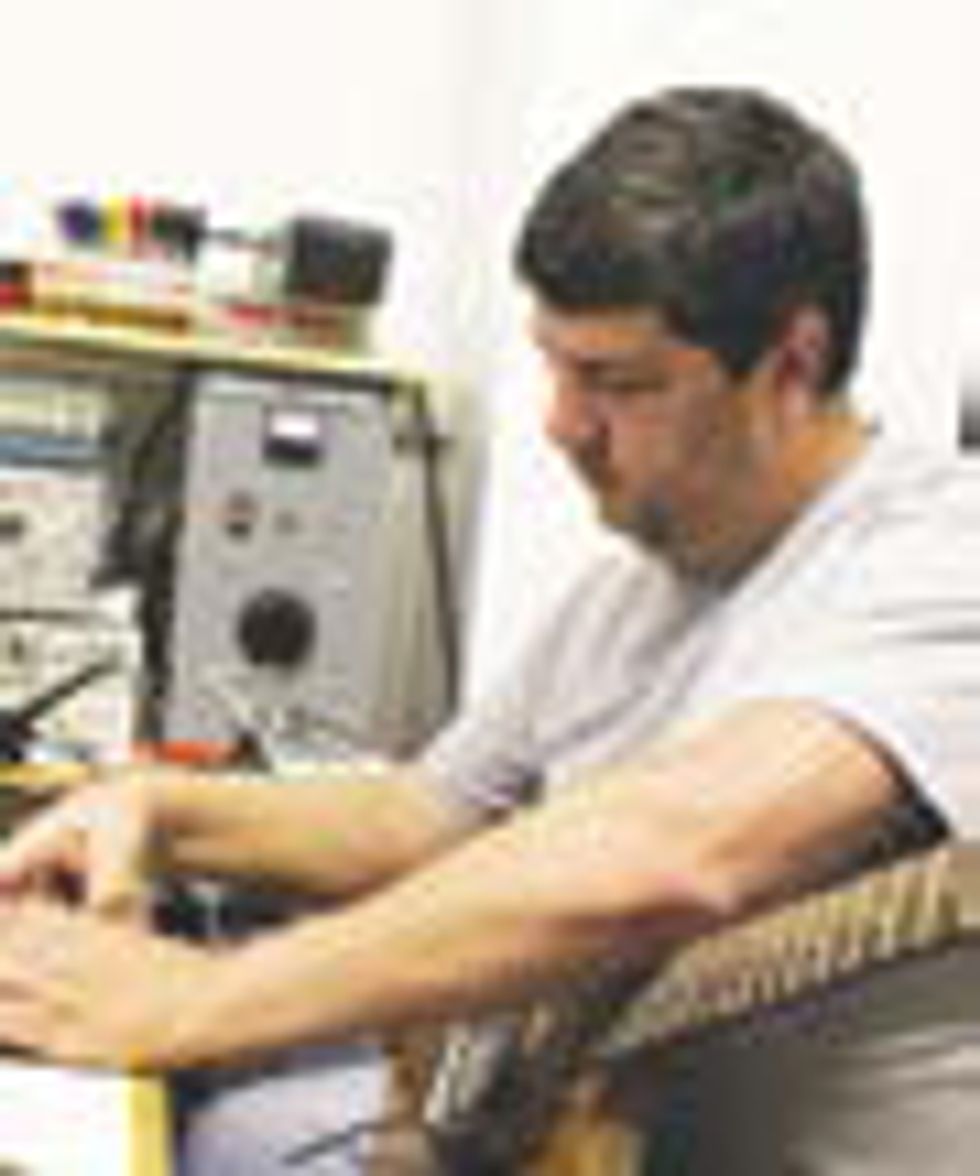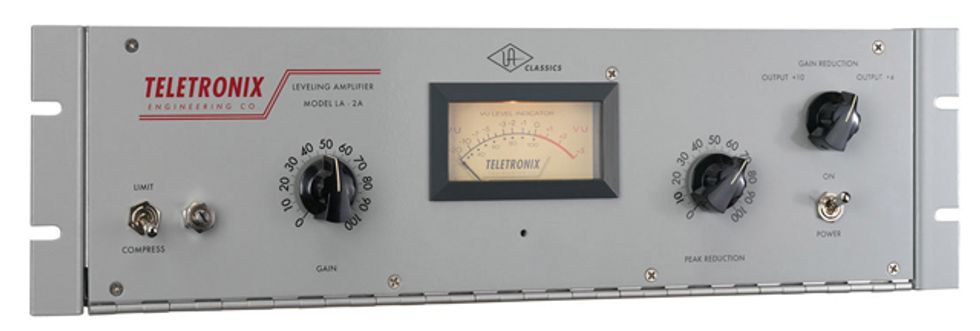"Making the needles stand on end” is how one recording engineer described the heavily compressed sound of ’80s rock bands. What is compression and how can we make the needles stand on end? For starters, we should clarify that we’re talking about dynamic range compression, using devices like compressor pedals, and not digital-data compression, such as MP3 encoding.
Essentially, compressors do what I do when I’m watching a movie after the kids are asleep. I turn up the volume to hear the dialog and quickly turn down the volume when the car chase and explosions kick in. It’s important to note that turning the volume up and down should not introduce distortion, as this volume change is done over many audio cycles. This is opposed to clipping the signal, which compresses the signal but introduces harmonic distortion.
Fig. 1. One of the great studio compressors, the Teletronix LA-2A Leveling Amplifier, first appeared in
1965 and was produced until 1969. This tube-driven electro-optical attenuator system is now available
again from Universal Audio, which builds LA-2A repros in California using old-school, point-to-point wiring.
Let’s take a look at a classic studio compressor, the Teletronix LA-2A (Fig. 1). See those two big knobs on the front? One is marked gain and the other is marked peak reduction. If we start by turning up the peak reduction knob, the level of the loud parts of the signal will be reduced and the overall perception is that the program material is quieter. That’s when we can reach for the gain knob and increase the volume so that the overall perception is that we are back to where we started in terms of level, but with a reduction in dynamic range.
Dynamic range is the measurement of the difference between the quietest parts and the loudest parts. Metallica’s “Creeping Death” would have a fairly low dynamic range while Nirvana’s “Smells Like Teen Spirit” would have a larger dynamic range.
What about one-knob compressors? It’s possible to combine the peak reduction and gain knobs into one knob by using a pot that has two elements. These pots are usually used for stereo signals but we can coerce it into turning up the gain and peak reduction at the same time. This is what I’ve done with the Strymon OB.1. Since a compressor is typically near the beginning of the pedal chain, we can adjust the amount of increased gain to match the amount of peak reduction when using a medium-output pickup. This results in an experience where everything gets smoother, but not louder or quieter.
But what about low- or high-output pickups? The low-output pickup is not going to trigger the peak reduction as often and the signal will get louder as the comp knob is turned up. The opposite happens with the high-output pickups as they drive more peak reduction. This is where the level knob can be used to provide a fine adjustment on the amount of overall gain.
What’s the difference between opto, FET, VCA or tube compressors? The peak reduction circuit needs to be able to turn down the volume in response to a control signal—standard audio circuit components like resistors, capacitors, and op-amps can’t do this.
Opto compressors use a light-dependent resistor (LDR) and a fixed resistor to create a voltage divider that reduces the signal level. The resistance of an LDR goes down as it is exposed to light. Incandescent bulbs, LEDs, and electro-luminescent panels have been used to control LDR. One of the properties of an LDR is that it can be turned on (gain reduced) quickly, but turns off relatively slowly. This has a natural musical property and creates some the character of opto compressors.
FET compressors use JFETs or MOSFETs (two types of transistors) to create a voltage-controlled resistor that is used in a voltage divider like the LDR. But FETs are lightning fast and can clamp down or release as fast or as slow as the peak reduction circuit dictates. These compressors are usually associated with the pumping kind of sound you get from many compressor pedals.
VCA (voltage-controlled amplifier) compressors use an integrated circuit multiplier that can be very fast and precise. You are more likely to see a VCA in a rack unit than a pedal.
Many “tube compressors” are really opto compressors with tube gain stages, but there are circuits that use a tube as the variable gain element. The LA-2A we discussed earlier falls in this category.
What about blend knobs? Some compressors will allow you to mix your uncompressed signal with the compressed signal. If the compression circuit has a very aggressive squash, then mixing in some uncompressed signal will get some of the dynamics back while maintaining overall compression.
Do you need a compressor pedal? Before deciding, take some time to explore the various available technologies to discover which devices work best with your music and guitars.
 Gregg Stock is Senior Analog Guru and Engineer at Strymon.
Gregg Stock is Senior Analog Guru and Engineer at Strymon.

























